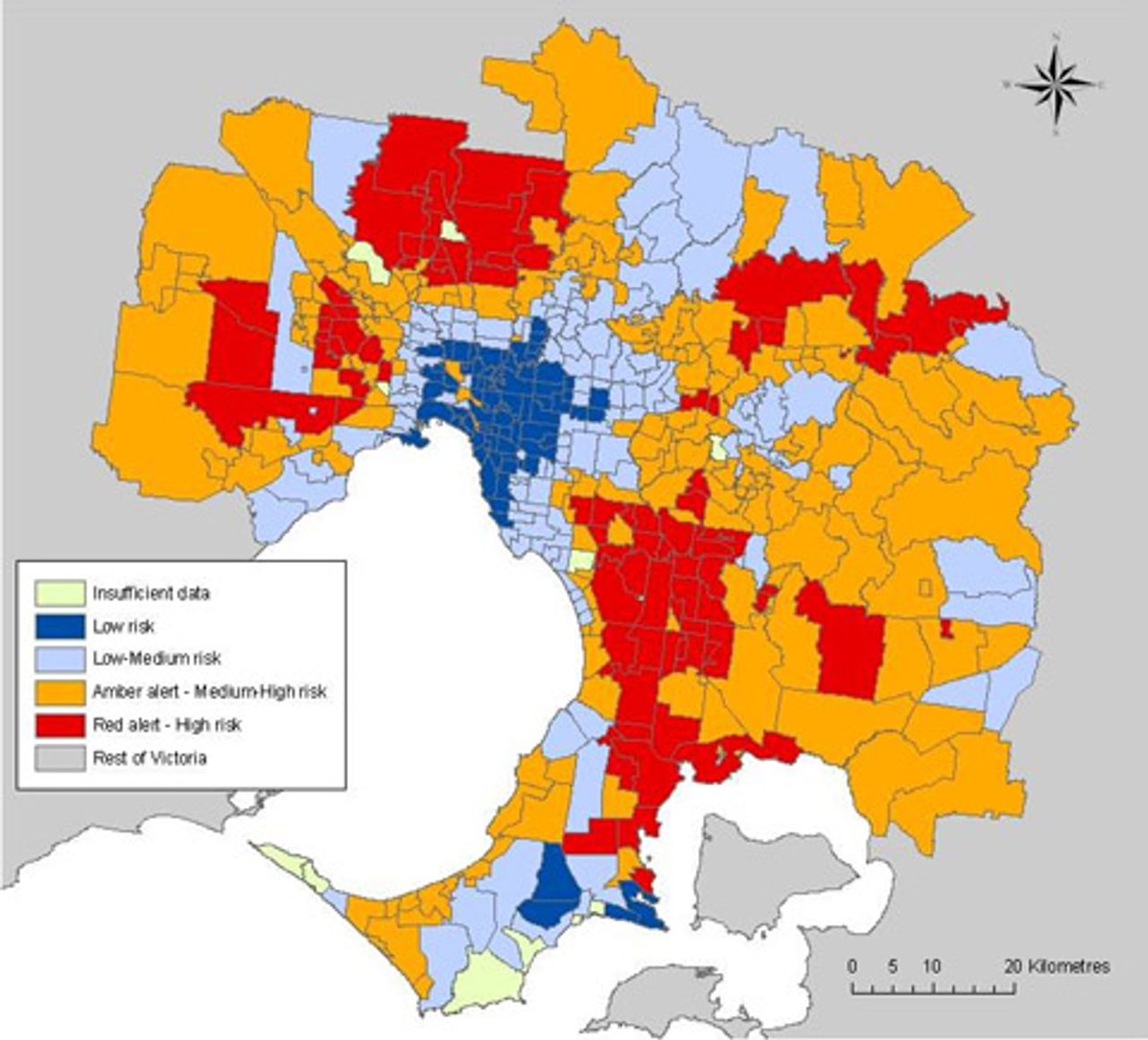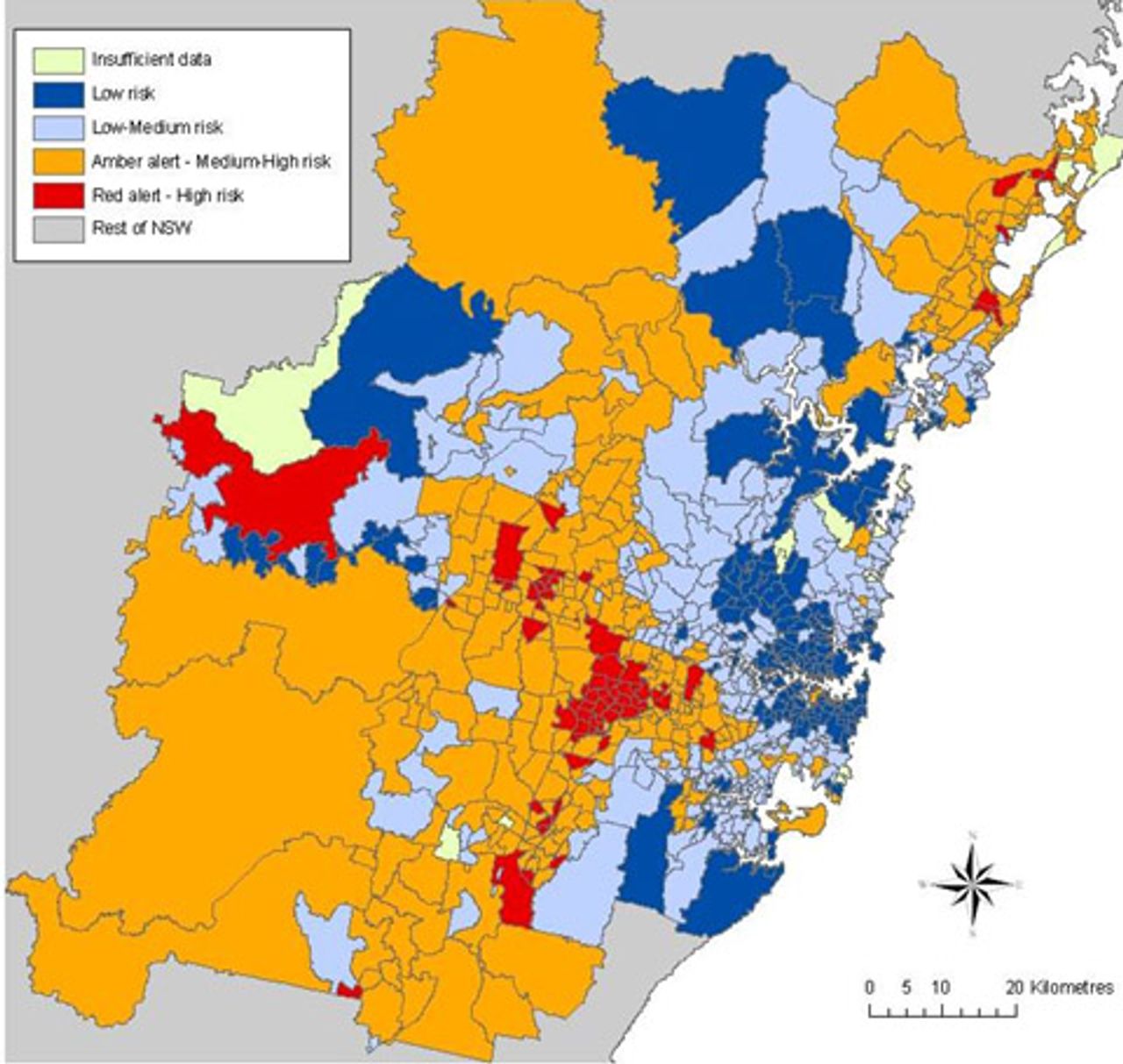A report released in March, “Red Alert Suburbs: An employment vulnerability index for Australia’s major urban regions,” highlighted the potentially devastating impact that rising unemployment will have on broad layers of the Australian population. The research report, jointly prepared by the Centre of Full Employment and Equity (CofFEE) at Newcastle University and Griffith University’s Urban Research Program, was based on extensive modelling using data on the employment characteristics of metropolitan suburbs.
CofFEE director Professor Bill Mitchell (co-author of the report with Scott Baum) explained that among the most vulnerable suburbs are those “in the middle and outer suburban mortgage belts where households purchased homes during the recent housing and economic boom”. Noting that these “represent the new face of disadvantage in our suburbs,” he warned: “A real danger is that as unemployment strikes, many of these suburbs will become hot spots of home repossessions.”
The study devised an Employment Vulnerability Index that takes into account three indicators of job-loss risk: the proportion of people employed in those sectors of the economy especially vulnerable to recession (such as manufacturing, construction, services and retail), the proportion in part-time work, and the number of those without post-school qualifications.
Suburbs were divided into four categories according to their ranking on the index. “Red Alert” and “Amber Alert” suburbs were “most exposed to potential job losses and least well placed to escape disadvantage associated with increasing unemployment”. These constituted nearly one-third of all suburbs. The other two categories, “medium low risk” and “low risk,” constituted 39.6 and 17.9 percent respectively of all suburbs.
The report identified one category of Red Alert suburbs as traditional “battler” areas, largely “suburban industrial communities that were established during the Post-World War II Fordist phase of expansion”.
With the de-industrialisation of whole sections of the Australian economy over the past three decades, predominantly manufacturing-based areas have suffered from persistently high unemployment. Laid-off workers and young people have had no opportunities beyond occasional openings in the typically low-paid and casual retail and service sectors.
Suburbs such as Cabramatta in western Sydney, and Broadmeadows in northern Melbourne, for example, suffer official unemployment rates of 15.9 percent and 15.7 percent respectively—almost three times the national rate—and have median household incomes less than two-thirds the national average, as well as a considerably higher than average proportion of people without post-school qualifications.
Entrenched unemployment—combined with grossly inadequate government spending on local infrastructure, recreational facilities, healthcare and education services—has inevitably seen such areas suffer from myriad social problems. As the current economic crisis unfolds, the situation is set to further worsen. The researchers concluded: “[f]or these suburbs the spectre of further job losses can only increase the potential for despair and entrenched long-term disadvantage.”

Melbourne suburbs, from “Red Alert Suburbs,” Centre of Full Employment and Equity

Sydney suburbs, from “Red Alert Suburbs,” Centre of Full Employment and Equity
The second category of Red Alert suburbs are relatively new suburbs predominantly found in the outlying urban growth corridors of capital cities and non-metropolitan regions.
Unlike the “battler” suburbs, many of these newer areas have had average or lower than average unemployment rates and high labour force participation rates. Many, such as Narre Warren and Pakenham in south-east Melbourne (which has a high proportion of such suburbs), have average to higher than average median household incomes. They tend to have high concentrations of jobs associated with manufacturing, construction, mining, retail or services, and high proportions of people with no post-school qualifications, compared to the national averages. The populations also tend to be younger than average.
The report characterised such areas as “places where families have chosen to live in an attempt to get a foothold in the housing market given that the recent property booms have further segregated the housing market across Australian cities”.
The report continued: “These are suburbs where households are typically carrying high levels of debt and depend on two incomes to meet their nominal repayments. One of the household income earners is likely to be working in a part-time (and increasingly underemployed) capacity and total family income is highly dependent on the casual hours being maintained. One of the first casualties in a recession is the volume of part-time working hours that are available. With small changes in hours of work on offer, households in these suburbs will quickly enter financial crisis and the latent disadvantage will then manifest.”
These findings underscore the reality that millions of working people are going to be plunged into extreme hardship by the worst economic crisis since the 1930s Great Depression.
As social inequality has escalated and their real wages have declined for more than 20 years, workers have turned to a number of individual coping mechanisms as a means of maintaining their standard of living—household debt has skyrocketed, people have taken on additional jobs, shifts, and hours, many workers have moved to the less expensive outer suburbs, and families have largely abandoned hope of surviving on one income alone.
These mechanisms are now rapidly breaking down. Broad layers of the working class and lower middle class are set to experience the social misery now unfolding in the United States, with mass home foreclosures, increased stress, family break-up, homelessness, and related social problems.
Despite the warnings on future unemployment contained in the “Red Alert Suburbs” report, it is clear that the authors underestimated the severity of the world capitalist crisis. Their predictions were apparently based on the assumption that the slump would prove comparable to previous recessions such as those in 1980s and 1990s. But the scale and rapid development of the current economic contraction surpasses anything seen in the post-World War II period. Even in the few weeks since the report’s release, the IMF and other global economic institutions have had to radically revise downward their forecasted economic growth figures for 2009 and 2010.
The “Red Alert Suburbs” report concluded by recommending that the Rudd Labor government implement a “Job Guarantee” program. Under this measure, a public works job at the minimum wage would be offered to anyone who wanted one. The authors claimed that spending $8.5 billion would create more than half a million of these jobs.
The conception that such a measure is capable of insulating Australian workers from the historic breakdown of the profit system is utopian. The central agenda of Prime Minister Kevin Rudd’s government is to impose the full burden of the economic crisis on the working class by driving down living standards, slashing social spending and launching a new wave of pro-business economic reforms. The task confronting working people is to advance their own independent solution to the crisis on the basis of a socialist and internationalist perspective.
The full “Red Alert Suburbs” can be downloaded here
